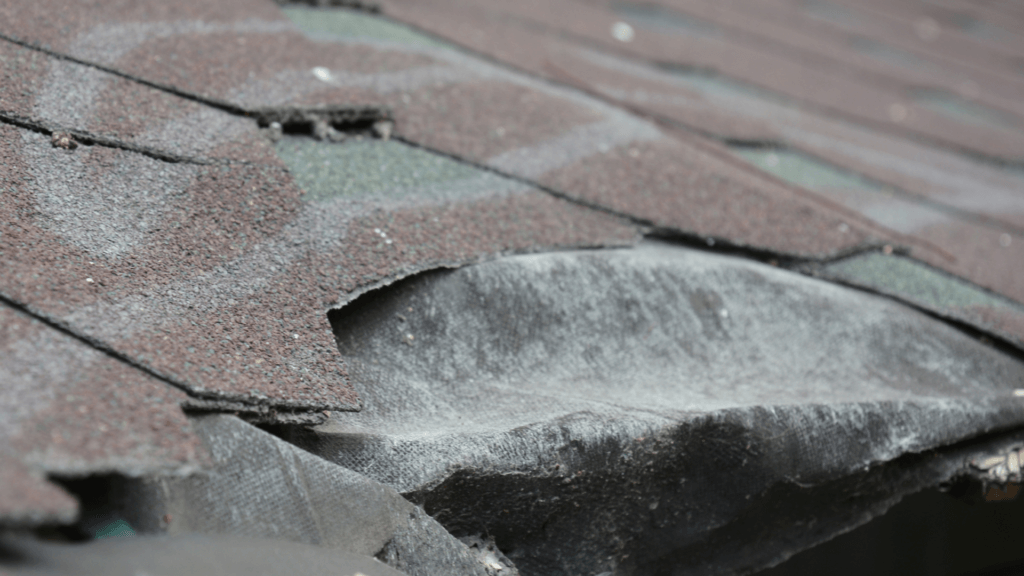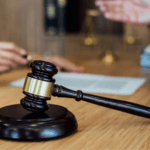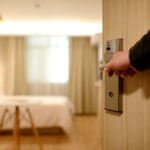
Commercial property owners are likely to deal with some type of roof damage to their properties during their operation. Severe weather events like hailstorms, tornadoes, and powerful hurricanes can cause millions of dollars in losses, leaving business owners unsure of what their options are to fully recover. Despite their promises to offer aid after an unexpected event causes significant property damage, insurance companies are first and foremost for-profit business operations. Often this means they are more likely to attempt to limit the number of claims they pay out to protect their bottom line. Commercial property owners must understand how to best manage roof damage claims to ensure they are properly addressed so they can get back on their feet.
Commercial Property Roof Damage Claims
When owning and operating a commercial property, owners should be aware of the potential risks of damage occurring. Any kind of property will endure at least some damage throughout its time in operation, which can bring about major headaches for owners. Roof damage in particular can be troublesome, as signs of immediate damage are not always apparent.
No matter if it was a small storm system or a devastating tornado, there are specific, necessary steps that must be taken to properly file an insurance claim and get the roof repaired, including:
Assess the Damage and File an Insurance Claim
The first thing business owners should do once they discover roof damage at their commercial property is to thoroughly review the damage. Locating and determining the overall extent of the damage is important, so as to not drastically overvalue or undervalue the claim. In these scenarios, it’s best to be as accurate as possible by taking photos and videos of the damage sustained.
Once the damage has been reviewed and documented, an insurance claim should then be filed. The owner of the policy will get a claim number in response, as well as be delegated a representative who will be in charge of investigating the damage on behalf of the insurance company. They will review the damage, as well as the maintenance measures and other efforts undertaken by the property owner to protect the roof. Once reviewed, an adjuster will be assigned to the claim to begin the adjustment process.
Make Temporary Repairs and Hire A Contractor to Review the Property Damage
In addition to having photo and video evidence of the damage, commercial property owners should also keep all necessary receipts and documentation for any temporary or emergency repairs that may be needed during the claims process. However, it’s important to note that these repairs should not be permanent, as that could impact the amount of coverage. Rather, property owners should take steps such as covering the damaged portions of the roof with a tarp or blocking off the inside areas of the property that may have also been damaged.
Once the adjuster has determined that the claim is valid, they will start assessing the overall extent of the roof damage. The insurance companies will then assign a roofing contractor to the claim; however, commercial property owners have the option to hire their own contractors to review the damage if they like. They will know what to look for and how to properly present their findings to the insurance company.
Reach a Claims Settlement With The Insurance Company
Once the insurance company and its adjusters have completed their investigation of the damage, they will provide the insured with their findings, as well as the estimated value of the claim. If the amount is reasonable, the commercial property owner will then be approved to begin the permanent repairs needed for the roof.
Unfortunately, however, disagreements over the outcome of a claim are all too common. If the insured and the insurer cannot come to an agreement on the outcome of a claim, the insured can dispute the insurance company’s findings and may pursue arbitration. In these cases, it is in the best interest of the policyholder to obtain legal counsel.
The Common Causes of Commercial Roof Damage
While performing routine maintenance is often the best course of action to prevent the need for costly repairs and dealing with insurers, this doesn’t always happen. Being able to catch the early warning signs of roof damage can help commercial property owners to detect issues and perform repairs before they become critical, which may exclude them from coverage due to a failure to maintain the property. The common causes and indicators of commercial roof damage that property owners should be mindful of include:
Leaks and Faulty Flashing
One of the top causes of commercial roof damage is faulty flashing. Roof flashing is used by professional roofers to direct water away from critical areas of the roof and is typically installed around vents, chimneys, and skylights. Installing flashing requires accounting for the expansion and contraction of roof materials in response to the elements. When installed incorrectly or punctured, flashing can cause a roof to leak. Additionally, issues around a roof’s pitch pan can also cause leaks to emerge. The pitch pan is used to seal the areas around pipes that may go through the roof. When they are not sealed properly, they can easily cause leaks.
Strong Winds
Strong winds from major storms can also cause commercial roof damage. When roofing materials are not accurately installed and maintained, wind pressure can put additional strain on roof flashing. When this pressure combines with internal pressure, a wind uplift occurs. Over time, this ultimately damages the flashing, seams, and membranes of a commercial roof. High winds can also blow vent caps off and allow water to leak in.
Punctures
Although commercial roofs are designed to withstand years of weather and pressure, sometimes the roof membrane can be punctured, which causes leaks, and need costly repairs. This is especially true concerning hailstorms that have the potential to drop sizable hailstones directly onto a roof. Typically, hailstorms occur within larger thunderstorms as dense ice pellets, called hailstones, abruptly form. These hailstones can vary in size and drop with little warning, quickly causing property damage. Texas is routinely susceptible to the effects of hailstorms and has had more hail and wind claims filed than any other state, but hailstorm impacts are spreading.
Hailstones can hit already vulnerable portions of a roof and easily puncture it. On occasion, having HVAC, plumbing, and/or electrical contractors work on a roof can create punctures as well in the event they drop a heavy object or machinery on the roof. They can also inadvertently cause damage to flashing during their time working on the roof of a commercial property.
Standing Water
Standing or ponding water can occur on a roof due to clogged drainage systems, a poorly installed roof, or a roof that has not been well maintained. Regardless, the presence of standing water can add an incredible amount of pressure to a roof’s surface.
One gallon of water weighs 8.34 pounds, meaning 100 gallons of water on a roof can add 834 pounds of dead weight on top of the roof. When water accumulates, the acceptable weight load of the roof may be exceeded, which could lead to massive structural damage to the roof that may even cause it to collapse.
New Equipment Installation
The installation of new or upgraded equipment on a commercial property’s roof can also add considerable weight to it. In these cases, property owners may unknowingly exceed the roof load and put the integrity of not only the roof but the building as a whole, at risk. When planning the installation or replacement of equipment on the roof, commercial property owners should calculate the roof’s dead load, live load, and transient load capacity to avoid exceeding the overall load capacity.
Poor Roof Maintenance
When a commercial property owner does not maintain their roof or perform regular inspections on it, this can cause costly repairs that could have been avoided. If the property owner notices water stains on the ceiling or other indicators a roof has been damaged, a professional roofer should be called in for an inspection. Performing routine commercial roof inspections can help owners locate problems at the outset and avoid having a commercial property damage insurance claim denied due to improper maintenance.
Roof Damage Not Covered by Commercial Property Insurance
While certain instances of roof damage may be covered by commercial property insurance, many other instances are unlikely to be covered by insurance, including:
Leak and Water Damage
Leaks and other forms of water damage on a roof are only covered if the damage was caused by a covered event, like hail puncturing through the roof. Most insurance policies will generally not cover water damage to a roof if hail and wind damage are not already covered by the existing policy. If a leak develops over time due to wear and tear, or if the roof has not been properly maintained, an insurer will likely deny coverage as well.
Roof Age
Roof damage claims likely won’t be covered if the roof is at a certain age. In most cases, roof damage on a roof that is 20 years old or older, which accounts for the lifespan of most shingle roofs, will not be covered. A roof on a commercial property can also be deemed too old if one of the lower layers is 20 years old and a new layer was simply added to it rather than the whole roof being replaced.
Damage Caused by the Property Owner
If a commercial property owner damages their roof, the claim will most likely be denied. Property owner damage can happen in the form of water damage due to wear and tear or attempting to self-repair the roof and damaging it further.
Risky Materials
Some roofing materials that are highly expensive or can be easily damaged will most often not be covered by a commercial policy. For instance, materials like wood can easily burn and may not be covered, while more expensive metal and slate roofs that are costly to install will also likely not be covered.
Commercial Property Roof Damage Lawyers
Dealing with a damaged roof can be cumbersome for even the most established commercial property owner. While filing a commercial property damage claim is an important step toward getting a damaged commercial roof repaired, if a valid claim is denied, underpaid, or delayed, you could need legal counsel. At Raizner Slania, we have handled thousands of insurance claim denial cases and have a proven track record of success against every major insurer. If you have a valid roof damage claim that your insurer is attempting to delay or deny, we can help you hold them accountable.


